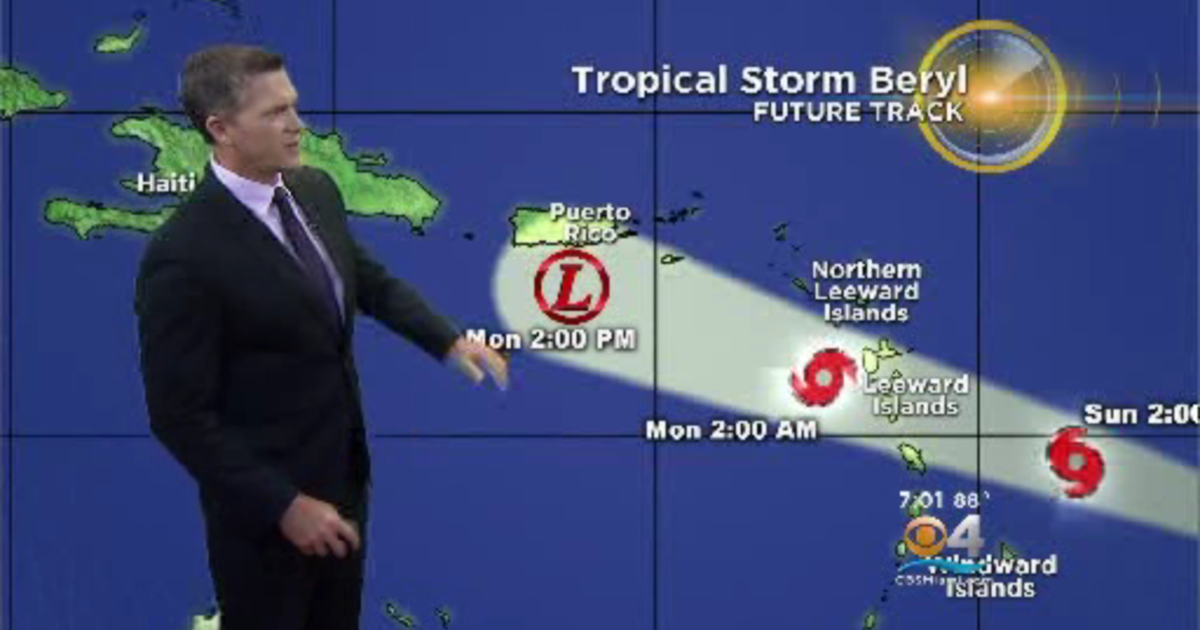Hurricane Beryl’s Path and Intensity

Hurricane beryl tracker – Hurricane Beryl is a Category 1 hurricane that formed in the Atlantic Ocean on July 12, 2023. The storm is expected to strengthen as it moves towards the east coast of the United States. The National Hurricane Center has issued a hurricane watch for the coast of North Carolina from Cape Lookout to the Virginia-North Carolina border.
The projected path of Hurricane Beryl is shown in the map below. The storm is expected to make landfall in North Carolina on July 15, 2023. The hurricane is expected to weaken as it moves inland, but it could still cause significant damage to the region.
As Hurricane Beryl continues its path, it’s crucial to stay informed about its trajectory. With the ongoing pandemic, it’s also essential to be aware of the covid variants symptoms and take necessary precautions. As Beryl approaches, make sure to secure loose items and stay updated on its progress to ensure your safety during the storm.
Current and Forecasted Intensity
Hurricane Beryl is currently a Category 1 hurricane with maximum sustained winds of 85 mph. The storm is expected to strengthen to a Category 2 hurricane by the time it makes landfall. The Saffir-Simpson Hurricane Wind Scale is used to classify hurricanes based on their intensity. The scale ranges from Category 1 to Category 5, with Category 5 being the most intense.
Hurricane Beryl, a formidable storm, continues to pose a threat as it barrels towards the coast. While Florida’s Governor, Ron DeSantis, focuses on ensuring the safety of his constituents, he has also recently exercised his veto power on several bills, including those related to desantis vetoes.
As the storm approaches, it is crucial to stay informed about its trajectory and potential impact. The Hurricane Beryl tracker provides real-time updates, enabling residents to make informed decisions for their safety.
The factors that influence the strength and movement of hurricanes are the temperature of the ocean water, the wind shear, and the Coriolis effect. The temperature of the ocean water provides the energy for hurricanes. Wind shear is the difference in wind speed and direction between different levels of the atmosphere. Wind shear can weaken hurricanes by disrupting their circulation. The Coriolis effect is a force that deflects objects moving in the atmosphere to the right in the Northern Hemisphere and to the left in the Southern Hemisphere.
Potential Impacts of Hurricane Beryl

Hurricane Beryl has the potential to cause significant impacts along its path. The areas most likely to be affected include coastal communities in the southeastern United States, from Florida to North Carolina.
The hurricane’s strong winds can cause widespread damage to infrastructure, including power lines, buildings, and bridges. Storm surge, a wall of water pushed ashore by the hurricane’s winds, can cause flooding and damage coastal property. Heavy rainfall can lead to flash flooding and river flooding, which can also cause significant damage and loss of life.
Preparing for Hurricane Beryl
It is important to take steps to prepare for Hurricane Beryl and stay safe during the storm. Here are some tips:
- Stay informed about the hurricane’s track and intensity by listening to local news and weather reports.
- Gather emergency supplies, including food, water, first aid kits, and batteries.
- Secure your home by boarding up windows and doors and bringing in outdoor furniture.
- If you live in an area that is at risk of flooding, evacuate to higher ground.
- Follow the instructions of local officials and emergency responders.
Tracking and Monitoring Hurricane Beryl: Hurricane Beryl Tracker

Tracking and monitoring Hurricane Beryl’s progress is crucial for issuing timely warnings and taking appropriate actions to ensure public safety. Various methods are employed to gather real-time data and provide accurate forecasts.
Weather Satellites
Weather satellites play a vital role in hurricane tracking. They orbit the Earth and provide valuable information about the storm’s location, intensity, and structure. Satellite imagery can detect the formation of tropical cyclones and track their movement across vast ocean areas.
Radar
Radar systems are used to monitor the precipitation and wind patterns associated with Hurricane Beryl. Doppler radar, in particular, can provide detailed information about the storm’s wind speed and direction, helping forecasters determine its intensity and potential impact.
Aircraft Reconnaissance
Aircraft reconnaissance missions are conducted to gather in-situ data about the hurricane. Planes fly directly into the storm to measure wind speed, temperature, and pressure. This information is critical for improving the accuracy of hurricane forecasts and predicting its future path.
Data Analysis, Hurricane beryl tracker
The data collected from weather satellites, radar, and aircraft reconnaissance is analyzed by meteorologists and scientists to provide accurate forecasts. They use sophisticated computer models to simulate the storm’s behavior and predict its trajectory and intensity. These models are constantly updated with real-time data, allowing forecasters to make timely adjustments and issue warnings to affected areas.